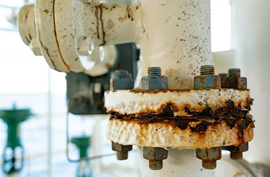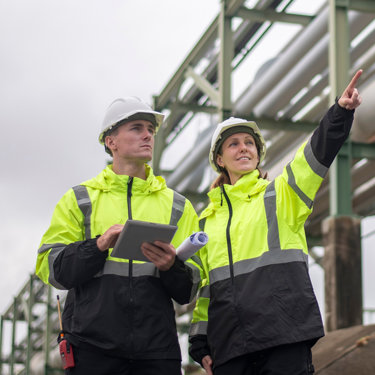Emergency spill response after theft at distribution depot causes loss of 21,000 litres of fuel
Published: 7 June 2022
Project overview
We were called into a situation at a distribution depot, where there had been an attempted theft of 25,000 litres of diesel from a tank on their site.
The thieves had managed to get away with only 4,000 litres; the remaining 21,000 litres were escaping underground, where it had entered subterranean drainage and was making its way to a nearby watercourse. Birds and fish in the river were at huge risk.
The first challenge was to stop the contamination spreading. An extremely rapid response was needed to contain and control the escaped fuel over a 2km stretch of a fast-flowing river.
The second challenge involved removing the damaged tank itself, bracing and shoring the excavation, and investigating any surrounding contamination before backfilling.
And of course, the whole operation had to be conducted without disruption to the client’s operations or risk to the public.
Our solution
Our initial priority was emergency containment of the leaked fuel, which we uplifted from the local watercourses. We swept the areas with booms and skimming equipment in a concentrated rinse and repeat operation, installed containment on the inlet pipe to the marina, and conducted daily monitoring.
We ran CCTV through the full drainage system on the site to check for defects and signs of contamination. We also cooperated with the RSPB, RSPCA and local volunteers to rescue around 200 birds.
Alongside the containment, we managed a phased operation to remove the damaged tank, working closely with the client on a formal CDM basis. We brought in a specialist team of excavators and engineers, who painstakingly dug out the damaged tank, and excavated three metres further down into the ground to enable a comprehensive investigation of any ground contamination, helping us frame a remediation strategy. The excavation required a sophisticated system of bracing, sheet piles and shoring, designed and managed by our experienced structural engineers.
The team then drilled 17 boreholes to map where the escaped fuel had reached, and our consultants conducted daily sampling over several weeks to build a pattern of levels and direction of contamination. Alongside a full topographical survey of surrounding land, this data was vital in identifying any ongoing risk to the environment.
Results and benefits
After three weeks of containment and clean-up measures, the site and local waterways were deemed clean, although longer-term monitoring remained in place.
Around 130 of the rescued birds survived, and no other aquatic life was found to be affected. The excavations around the damaged tank were successfully dismantled and backfilled.
The client faced very little disruption beyond a short-term closure of just three loading bays, with no real effect on their operations.
Because of our timely, comprehensive and expert handling of the incident they escaped fines or prosecution, and, although the operation has so far cost around £800,000-900,000, this is a fraction of the damage that could have occurred (both financially and reputationally).
The Environment Agency and our wildlife partners were happy that a thorough job had been done, and any impact on the public had been negligible.
More from our Knowledge Hub
 Insights
InsightsMitigating climate change risks through planned preventive maintenance
 Insights
InsightsProtective coatings: Safeguarding infrastructure against climate change
 Insights
InsightsDelivering the Water (Special Measures) Act: Supporting compliance and innovation
 Insights
InsightsA guide to navigating climate change regulations for UK businesses
Environmental compliance today, creating a sustainable tomorrow
Helping you reduce risk to the environment and your operation by managing assets compliantly while achieving commercial, ESG, and net-zero goals.
Contact our experts

